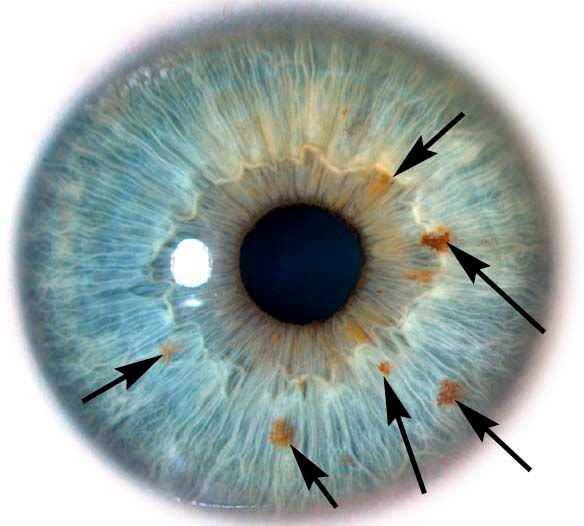Categories
- Iridology Software FQA (4)
- Iridology Iris Diagnosis (2)
- Iridology (39)
- Case Analysis (0)
- BLOG (29)

The eyeball is the primary organ for vision and is roughly spherical in shape. It is situated within the eye socket (orbit). The anatomy of the eye is crucial in understanding how it functions, especially in iridology, where the iris provides a reflection of the body’s overall health. The eyeball consists of three primary layers: the outer, middle, and inner layers.
| Layer | Description |
|---|---|
| Outer Layer | Cornea & Sclera |
| Cornea | The transparent front portion of the eye, shaped like a convex lens. It is essential for light refraction as light enters the eye. The cornea has no blood vessels but is highly sensitive due to numerous nerve endings. It serves as the eye’s primary interface with the external world. |
| Sclera | The tough, white, opaque part of the eye, made of dense collagen fibers. It provides structural support and protection. The sclera contains some blood vessels and nerve endings but is primarily non-transparent. |
| Middle Layer | Uveal Tract (Uvea) |
| Iris | The colored part of the eye that controls the amount of light entering through the pupil by adjusting its size. It consists of muscles that allow the pupil to constrict or dilate. The iris is essential in iridology as it holds key reflections of organ health. |
| Ciliary Body | A ring-shaped structure behind the iris that controls the lens shape for focusing (accommodation) and secretes aqueous humor. It also helps maintain intraocular pressure. |
| Choroid | The vascular layer between the retina and sclera that provides nourishment to the outer layers of the retina. The choroid plays a role in the eye’s metabolism and oxygen supply. |
| Inner Layer | Retina |
| Retina | The innermost layer of the eye, which contains light-sensitive cells (rods and cones). The retina captures visual information and converts it into neural signals. These signals are transmitted via the optic nerve to the brain for processing. The retina is crucial in vision and also in identifying certain signs of health through iris analysis. |
| Eye Structure | Iridology Relevance |
|---|---|
| Cornea | Iridologists often observe the clarity and texture of the cornea to gain insight into overall health, particularly related to the immune system and chronic conditions. |
| Sclera | The sclera can indicate issues related to blood pressure, inflammation, or circulatory problems based on its color, texture, and vascular patterns. |
| Iris | The iris serves as a key component in iridology, as specific areas correspond to various organs and systems in the body. Markings in the iris can signal potential health problems before they manifest clinically. |
| Retina | While not typically used in iridology, changes in the retina can sometimes reveal underlying systemic issues such as diabetes or neurological conditions. |
Understanding the basic anatomy of the eye, particularly the iris, is crucial for anyone involved in iridology. As we’ve seen, the eye is not only a visual organ but also a window into our health. Below are insights from prominent figures in the field:
Dr. Bernard Jensen (Iridology Pioneer):
“The iris is like a map of the body. Each part corresponds to an organ or system, allowing us to gain insights into a person’s health. It is one of the most effective and non-invasive methods to assess health.”
Dr. Henry Edward Lane (Renowned Iridologist):
“The eye is truly a reflection of the body’s internal state. By understanding its structure and function, we can interpret the changes in the iris and predict health issues before they arise.”
Dr. Peter Thiel (German Iridologist):
“Iridology is grounded in the understanding of eye anatomy. Through the iris, we can observe not only the physical structure of the eye but also the health of various internal organs, offering an early warning system for potential health problems.”
In conclusion, the basic anatomy of the eye, especially the iris, provides a valuable basis for understanding how iridology functions in health management. With the advancements in this field, we can continue to expand our understanding of how eye health and overall wellness are interconnected.
